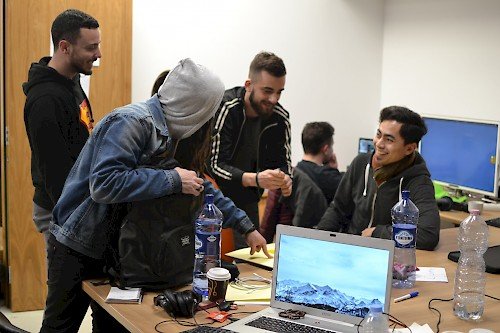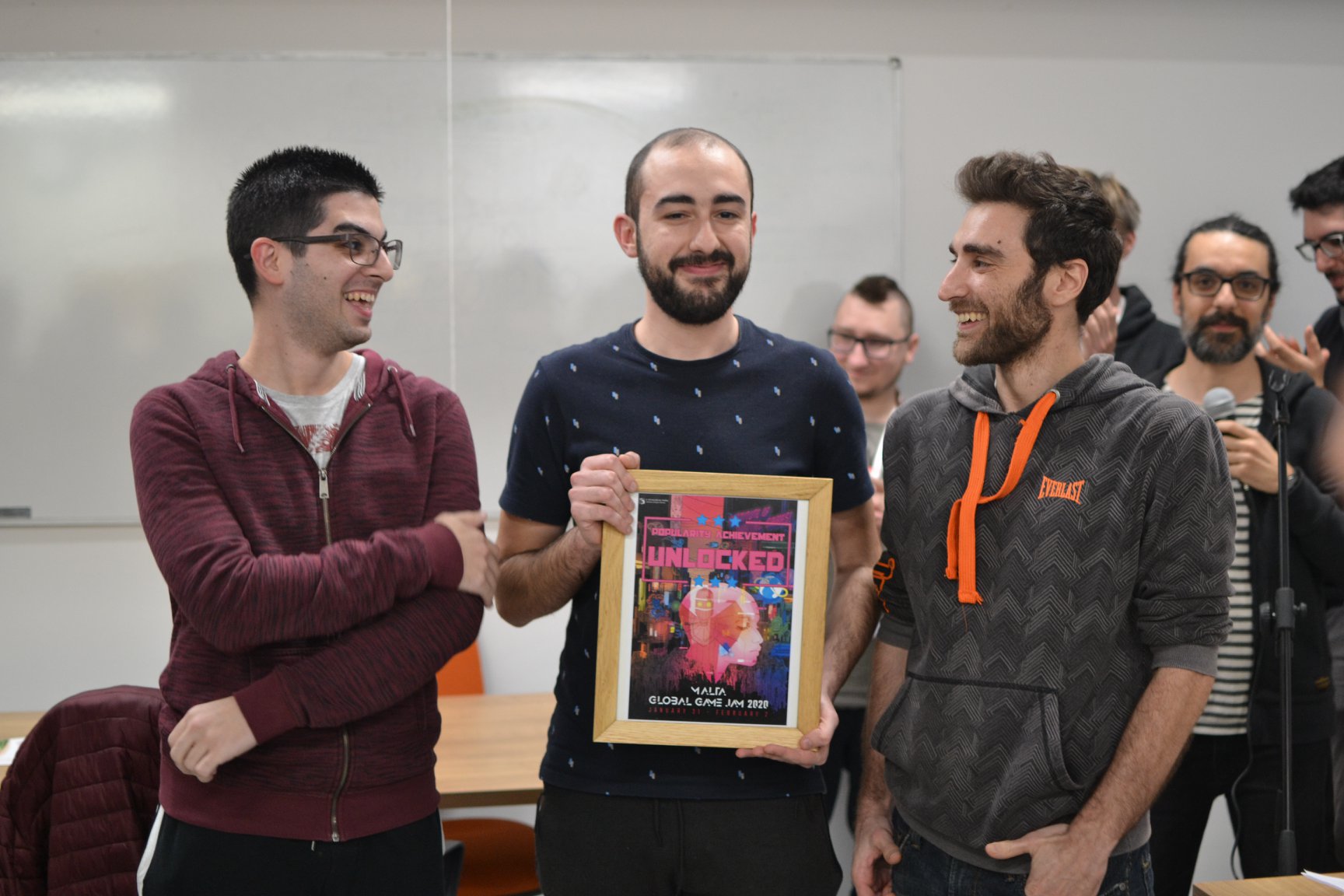
Malta Global Game Jam Round-up 2020


At the end of January the world came together to make games all over the globe as part of the Global Game Jam. At the Institute of Digital Games, 65 of the thousands made their own beautiful projects in 48 hours. We’ll now give you a snapshot of all the games made with some quick comments and impressions. If you just want to see silly pictures of stressed people gaming you can check out our online album for this year's Game Jam.
The Game Jam theme this year was Repair, and before we the theme was announced Senior Producer from Machinegames, Kari Koivistoinen gave our jammers some hard-earned advice on making games. Fail as early as possible, as he said in his keynote, “Celebrate success with a beer and celebrate failure with champagne.” Because that is when you have actually learned something. And that is what should apply to the people at the jam as well, celebrate what you have succeeded in, but far more important are probably the lessons learned from what failed at the game jam.
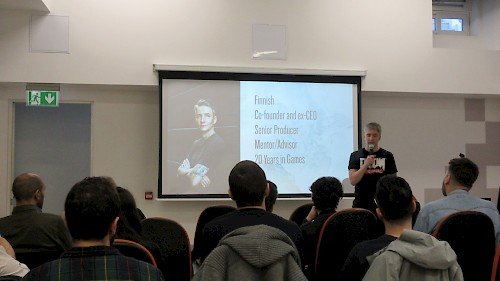
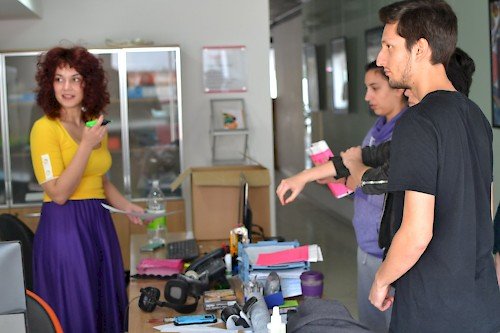
We also had a Game Knowledge Pub Quiz and to our great relief the IDG team knew their stuff and managed to win. This means that they retain their crown from the last time in 2016 when the MVGSA organized the Videogames Pub Quiz!
All the games are worth playing, so I ecourage you to check out the Game Jam link and downloading any that seem interesting to you!
Let’s start with the winner of the Popular Vote prize, the game chosen by the fellow jammers to be the best at the end of the Arcade Mode.
Love in the Neighbor-Hoot - #PopularityAchievementUnlocked!
Description: A 4-player co-op puzzle game. Match the couples by pushing them towards each other!

Impressions: Really enjoyed playing this game. It forced players to talk to each other and coordinated. It almost reminded me of playing football (but less tiring and sweaty) where you have to optimize your movements with each other to make sure you move the couples as fast as possible. The art style and animations were polished giving it a great whimsical and cartoony feel. I definitely understand why this was chosen as the popular vote.
It's just too bad it requires 4 people to play since I won’t be able to play alone. :D
Description: 2D Gather & Survive Game You are a tinker smurf(like) whose air balloon breaks down and you have to fix it while you are being chased by hordes of hostile mushrooms.
Impressions: When I first played Mishap Balloon, I had no idea what to expect and then I was ambushed by hordes of hostile mushrooms. It was a shocking experience from a game with such a happy smiley aesthetic. The controls were working the collection mechanism was working and once you were in the hot air balloon you escape the scary (yet strangely happy) mushrooms. While feeling incomplete, Mishap Balloon has a distinctive and bizarre trippy aesthetic to it.
Description: A game about magnets and ballz. Two players compete over the control of magnets on an obstacle course to guide their metal ball to the finish line. The twist? Once you reverse polarity, it reverses all the magnets, even on your opponent's course. The game is best played with a Taiko no Tatsujin controller!
Impressions: Alternate controllers are always fun! This game was graphically sparse, but game play was smoothly designed and considered. Bashing the drum (and occasionally) the opponent made for a dynamic gameplay.
Description: P-repair yourself to survive
Impressions: The game wasn’t finished, but this was definitely a team of artists. The demo played was smooth and the 3D models were nice and the animations rigged up and ready. There was no gameplay implemented and no death, so I was shooting everything without needing to worry about dying, found that strangely therapeutical.
Desciption: The diametric opposite of breakout. Instead of controlling the paddle and destroying the blocks to finish the level, you must place down blocks to repair the level. At the heart of your level is your heart block, if that gets destroyed, you lose. Click to place blocks There is a cooldown after placing blocks You can't place blocks right around the heart, or too close to the ball Blocks of the same colour placed next to each other will have increased health.
Impressions: An addictive little game that worked very well and where the team was able to get it running smoothly. It was fun to reverse the concept of Breakout and blocking the home base with blocks was surprisingly difficult. Made it to fifth place on the high scores, but I’m pretty sure a certain “WIL” beat me several times over on the score list sending me plummeting off the list.
Description: Technology and computers make our lives more interesting by introducing unique problems and their very own levels of trouble. You got a virus, internet is down, the computer is on fire ... When everything seem lost, we call for these unsung and many times unappreciated office heroes without a cape. "IT people", "tech support", "helpdesk", "the weirdos downstairs", whatever you call them, the avengers of all your tech suffering will be there for you. After a cup of coffee. Move around with keys (up, down, left, right). Collect the solution around the office and bring them to the users before it's too late.
Impressions: A game with a frenetic pace with IT-Crowd inspired pixel art. iTroubled was another game that quickly became popular due to its addictive nature. Simple to pick up and dynamic enough to keep players engaged while player. iTroubled ended up as the runners-up in the popular vote competition and its addictiveness and frantic aesthetic probably helped. As their prize chocolate for the high score winner could have helped motivate their many players. :P
Description: The game is set in the cold war era where two teams, one representing the US and the other representing the USSR, have to compete against each other to finish repairing their rocket to get to the moon. There is a conveyor belt churning out important parts to build the parts needed to repair the rocket which is shared between both teams.
Impressions: This team sadly did not finish their game and all I got to see was the concept art of their rocket. L
Description: Revitalize a long forgotten alien planet and breathe new life into it.
Impressions: This game was a stunningly beautiful tile-laying game. Tiles were elaborate fantasy landscapes that players could place and would become increasingly lavish. The player with the most hexagons occupied would win the game. A 4-player game which I played with 1 person (each playing 2 players) which made it a bit confusing, but perhaps I was just distracted by the intricacy of the artwork.
Description: Board game for two players.
Impressions: The team’s description doesn’t offer much, so I’ll briefly elaborate. In this boardgame 2 players work together to repair their relationship through dates and activities. It involves a certain amount of cooperation while remaining competitive. It was most amusing to watch two of my colleagues succeed at their date and save their relationship.
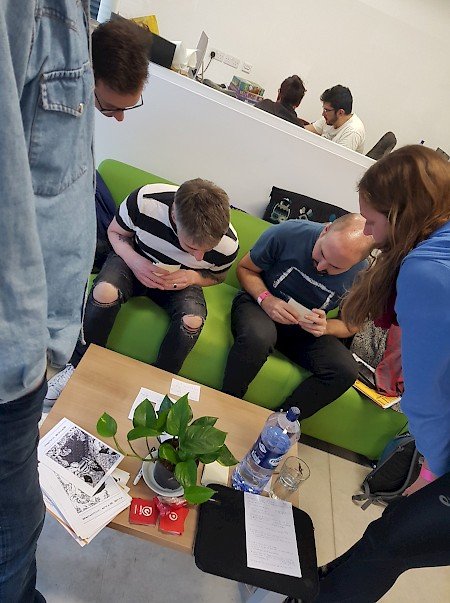
Description: On obtaining an artefact capable of repairing broken objects, the player must exit the ruins using the artefact while evading mercenaries without trapping themselves inside. A, D to Move, Space to Jump, Mouse to Aim, and Left Click to Repair. Made using Godot, Aseprite and sfxr.
Impressions: Reversed was a one-man team. Considering this, it is pretty amazing that he managed to finish the game. It has happened before of course, but being a one-man show will really require you to understand the scope of the game and you’ll have to do everything. The best part of Reversed were the puzzles, they were interestingly constructed and used the theme of repair really well as one of the mechanics of the game.
Description: RoboLazerz is a competitive strategic board game. The game is composed of a 5x5 board and a deck of 60 tiles. Each player starts with a hand of three tiles randomly drawn from the deck. The initial setup involves placing three units per player at the opposite edges of the board. There are four possible tiles: green tile, this tile allows the units to move on the board; laser tile: this tile allows the units to attack adjacent units (based on the direction the red arrow) when they move on a tile; shield tile, this tile allows the units to protect from adjacent laser tiles based on the direction of the shield; trap tile, this tile destroys instantly all the units that step in. Every tile has four numbers that decide the next move for every unit. Every unit moves automatically at the end of the player's turn and move into an adjacent tile if there is a green connection between the two tiles and following the order of the numbers. In case multiple units move at the same time, the player should maximize the number of units' moves. The match ends when one of the two players has destroyed all the opponents' units or if the board has been completed (no empty tiles left). The player with more units wins the game.
Impressions: In my opinion boardgames in a jam are more difficult because playtesting to iron out the kinks in the mechanics is such an integral part and you only have such a limited time to playtest. That being said, RoboLazers is a functional game with a lot of entertaining elements that really forces the players to strategize on the terms and possibilities the games.
Description: Waking up in an empty house, you have no recollection of your identity. Explore the house, discover your past in different rooms, and piece together the fragments. What will you discover about yourself? Instructions: Move using the Left and Right Arrow Keys. Climb the Ladder with the Up Arrow Key. Interact with sparkling objects by pressing the Space Bar. Explore the house and face your past.
Impressions: Shattered has great aesthetics and is visually polished. The tests exploring your past are interesting little puzzles. Loose fragments of a life that you try to piece together. I wish there was more of an event to trigger these puzzles and emotions. At the end you face the judgement of the game based on your actions which is great fun. Nice to see the consequences of your actions.
Something Something Museum Platformer
Description: A digital calamity leaves multiple rooms in a Video Game Museum in disarray. Players go through differently themed worlds, finding fragments of missing exhibits and returning to the Museum to repair them. The game is a retro-styled 2D platformer and is meant to pay homage to some of the most definitive names in video game history and mainstream culture.
Impressions: This game was difficult! I saw other players get father, so it might also be my own ineptitude, but the team had carefully (and frustratingly) determined the puzzles to be very difficult. There was no easy way out. It was also steeped in nostalgia and references that hardcore gamers would probably appreciate. Not for the faint of heart or slow of fingers.

Description: The gods are at war. Using your mighty hand you must plunder the world for broken weapons to YEET at your foe. Be sure to fix your materials to ensure MAXIMUM PAIN is delt. Instructions: Move around... Grab stuff... grab more stuff to combine... shake switch controller to build power.... release to throw. Get points!!! Repeat until time runs out.
Impressions: I won by shaking my controller harder than my opponent did. Yes, that is exactly as awkward as it sounds. The awkwardness really makes the game though as the controls make both players look quite foolish. It was a good laugh to pick up items and shake and throw.
Description: Gary has a problem. Actually, he has several problems. And he's going to need a lot of help if he's going to survive.
Impressions: Gary never stood a chance. I spoke with the development team early on and they knew full-well what they were getting into with this ambitious game jam project. Gary was designed to be a networked game where Gary’s in parallel dimensions could exchange clues to solve puzzles, complete tasks, etc. And with its cutesy astronaut star Gary was destined for the stars. The problem for him was that the stars are really really far away.
